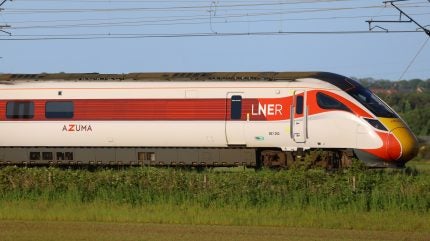
Network Rail, the UK’s railway infrastructure management organisation, has extended its collaboration with artificial intelligence firm CrossTech to test camera-based AI on UK trains.
In its latest trial, CrossTech will install cameras inside the cab of Hitachi Rail Azuma trains operating on the East Coast Main Line in collaboration with train operating company LNER.
The forward-facing cameras will be trained to inspect tracks and potential hazards “in real time”, with information shared with Network Rail to aid maintenance and risk assessment work.
“The system uses the very latest in AI camera sensor technology and can pinpoint locations where maintenance is needed,” according to LNER.
Although the precise software used in the trial is a collaboration between Hitachi Rail and its digital supplier CrossTech, similar CrossTech products have been used on the British rail network since at least 2021.
Its “Hubble” product has been used in Southern England to cut the risk of trackside vegetation blocking signals over its first 12 months. Network Rail said the programme saved as much as £3m ($3.9m) for taxpayers by dealing with vegetation and fallen leaves before they affected services.
However, Hubble only records videos and later uploads them to the AI system. The ECML trial will enable “live monitoring” of the railways.
“We can use this technology to understand where vegetation is encroaching on the operational railway and at risk of making contact with either trains or fixed infrastructure such as overhead electrified wires,” explained Network Rail route engineer Johanna Priestley.
We can also identify where vegetation growth has compromised the driver’s view, such as on the approach to signals or level crossings. This initiative will allow us to make passengers’ journeys more reliable and help minimise the risk of infrastructure-related disruption on the network.”
“The project is a testament to our long-standing collaboration with Network Rail’s Eastern and Southern Regions. It marks a significant advancement for frontline teams with passengers and freight customers continuing to benefit from Network Rail’s adoption of forward facing CCTV computer vision technology to support a safer and higher performance railway,” said Haydon Bartlett-Tasker of CrossTech.



